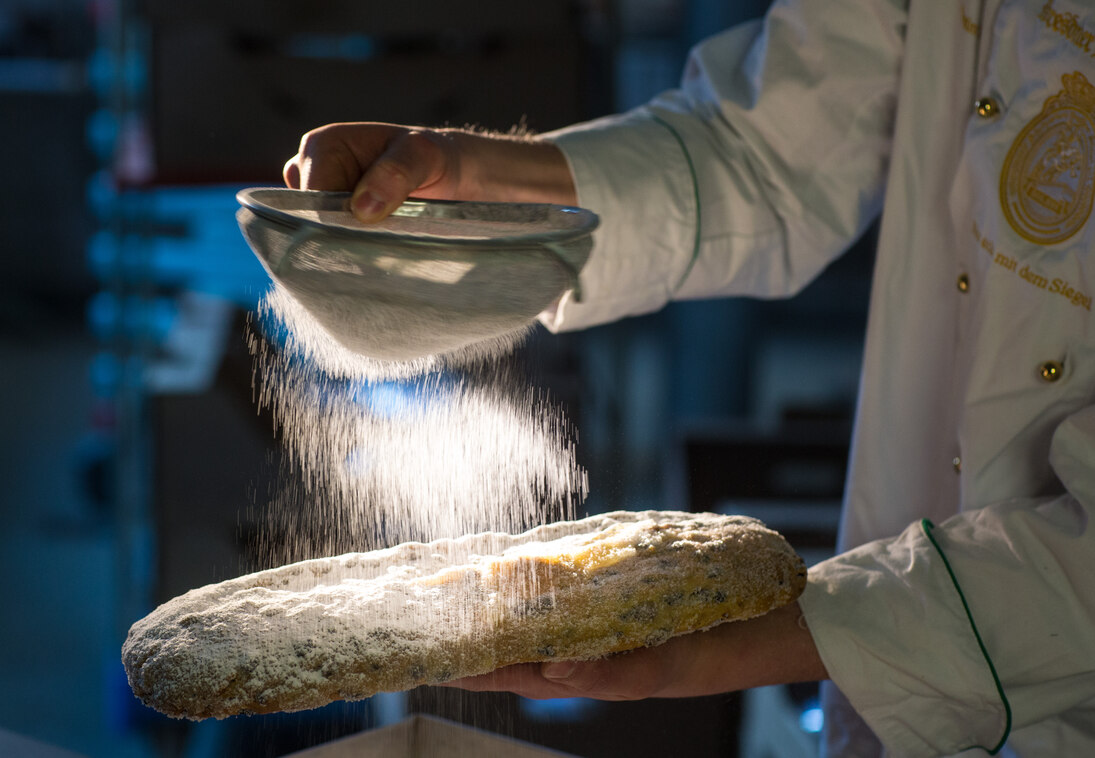Christmas treats
Zimtstangen, heißer Glühwein, süße Rosinen, warme Plätzchen – jetzt bricht die Zeit an, in der alles viel intensiver duftet und viele Erinnerungen weckt. Weihnachten ist eng verbunden mit Gerüchen und zahlreichen Gaumenfreuden.
The Christstollen
The Christstollen is one of Saxony's most traditional Christmas specialities, appearing at Christmas feasts year after year. Whether topped with raisins, almonds, frosting or icing sugar, it has for centuries been an indispensable part of Christmas. The Stollen's typical shape has its origins in Christianity, symbolising the swaddled baby Jesus. Every year, the delicious taste of the butter Stollen and the world's largest Stollen, a joint baking effort by Dresden bakers, attract thousands of visitors to the Stollenfest at Dresden's Striezelmarkt.
The Pfefferkuchen
Another Saxon pastry - the Pfefferkuchen - evokes memories with its unique aroma. Just outside Dresden is the Pfefferkuchen city of Pulsnitz, whose sweet and savoury gingerbread was popular even during the times of the Saxon royal court. Anyone wanting to know how Pfefferkuchen is made can watch the city's diligent bakers at work at Pulsnitz's Local History Museum and the Pfefferkuchen display workshop. The recipe, however, is not revealed - it's been a heavily guarded secret for centuries.

